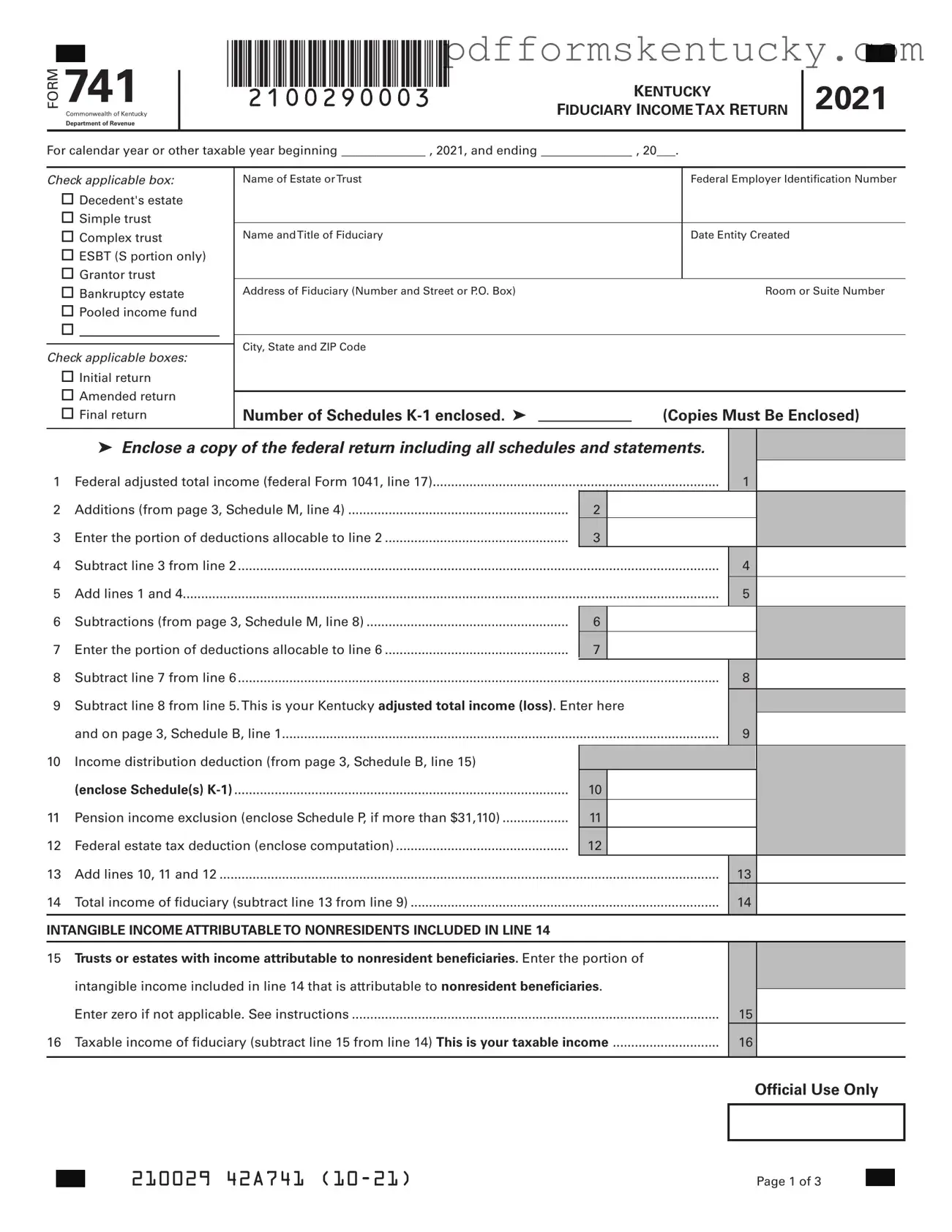What is the purpose of Form 741 in Kentucky?
Form 741, the Kentucky Fiduciary Income Tax Return, is used to report the income of estates and trusts for tax purposes. It helps the Kentucky Department of Revenue assess the taxable income generated by these entities during a specified tax year. The form is essential for ensuring compliance with state tax laws and accurately calculating any taxes owed or refunds due.
Who needs to file Form 741?
Fiduciaries managing estates or trusts in Kentucky must file Form 741 if the estate or trust generates taxable income. This includes decedent's estates, simple trusts, complex trusts, grantor trusts, and bankruptcy estates. If the entity has any income to report, filing is mandatory regardless of the amount.
What information is required to complete Form 741?
To complete Form 741, the fiduciary must provide details such as the name of the estate or trust, the Federal Employer Identification Number (FEIN), the name and title of the fiduciary, the address, and the tax year dates. Additionally, the form requires financial information including federal adjusted total income, deductions, and applicable credits. Attachments such as federal returns and Schedules K-1 are also necessary.
What are the key sections of Form 741?
Form 741 consists of several key sections, including the calculation of federal adjusted total income, additions and subtractions to income, and the computation of taxable income. It also includes schedules for charitable deductions and income distribution deductions, which help determine the final tax liability or refund. Each section must be filled out accurately to ensure proper tax assessment.
Are there any specific deductions available on Form 741?
Yes, Form 741 allows for various deductions. Notable deductions include the income distribution deduction, pension income exclusion, and federal estate tax deduction. These deductions can reduce the taxable income of the estate or trust, ultimately lowering the tax liability. Careful documentation and adherence to the guidelines for each deduction are essential.
How is the tax computed on Form 741?
The tax is computed by first determining the taxable income of the fiduciary, which is calculated after accounting for all additions and subtractions. The applicable tax rate is then applied based on the Kentucky tax rate schedule. Nonrefundable credits can be subtracted from the total tax amount to arrive at the final tax due or refund amount.
What should be done if Form 741 needs to be amended?
If an amendment is necessary, the fiduciary should check the appropriate box on the form indicating it is an amended return. An explanation of the changes must be provided, either on the form itself or on a separate page. It is crucial to ensure that all corrections are clearly documented to avoid any issues with the Kentucky Department of Revenue.
Where should Form 741 be submitted?
Completed Form 741 should be mailed to the Kentucky Department of Revenue in Frankfort, Kentucky. The address for refunds and payments differs, so it is important to ensure the form is sent to the correct location. Additionally, checks should be made payable to the Kentucky State Treasurer to facilitate proper processing.
